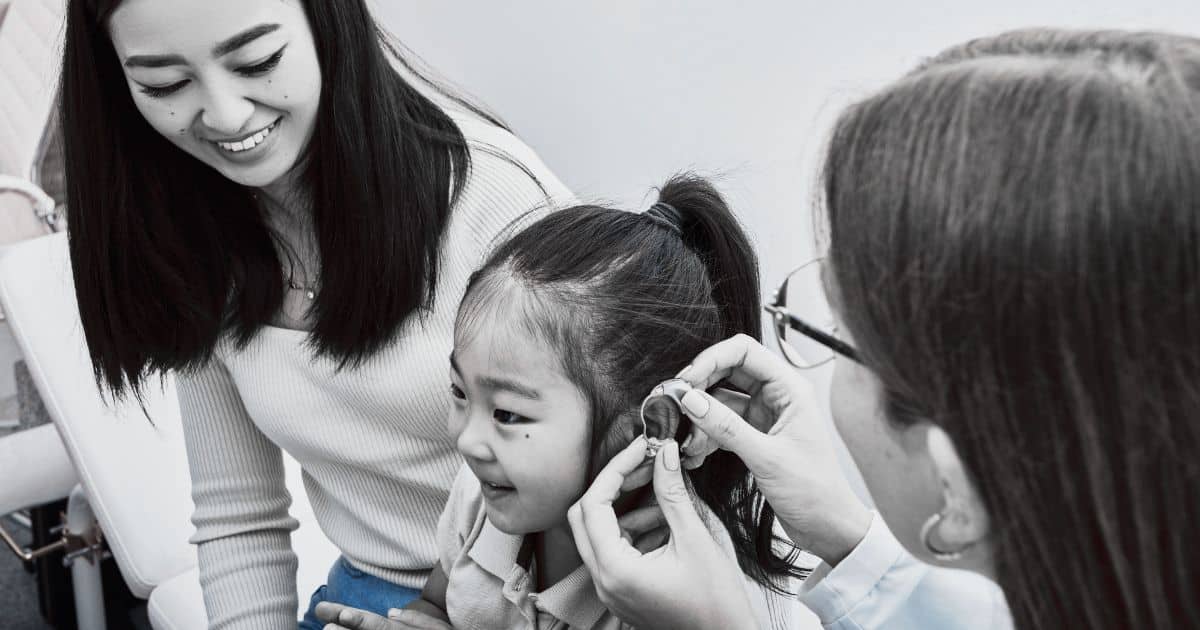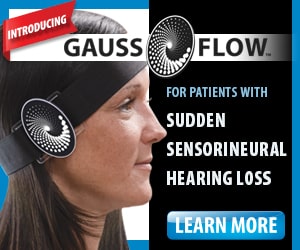Note: Today’s post is submitted by my good friend and colleague Sylvia Rotfleisch. Sylvia is an auditory verbal therapist in private practice in Los Angeles with many years of practice providing auditory based speech-language and listening therapy to children with hearing loss.
Audition
- Hearing loss will impact the child’s auditory, speech and language skills.
- Check their hearing technology every time you work with them.
- Learn the Ling 6 sounds and the applications and implications. Use the Ling 6 sounds to check technology and to be aware of the child’s access to speech and language structures.
- Closer not louder. Speaking louder doesn’t necessarily improve auditory access – move closer to improve hearing access.
- Work through hearing and supplement with other sensory modalities as necessary and appropriate.
- Enhancing perception of the speech phoneme typically results in improvement or correction of the production of the sound.
- Acoustic highlighting can help improve auditory access to sounds. Whispering, which is an acoustic highlighting strategy, allows unvoiced sounds to be more accessible because the adjacent and louder phonemes and vowels are now not masking out the quieter phonemes. Another acoustic highlighting strategy can be elongation. Isolation and elongation of a continuant sound will make the sound more accessible and can be then more readily attended to within words.
- It’s OK to sit behind or beside a child to have them rely on hearing rather than vision for speech correction and language comprehension.
- Children with hearing loss are not speech impaired or language impaired but hearing impaired. That is why they make the specific speech errors or have difficulty learning some morphemic structures. Begin work based on that assumption rather than going for typical articulation correction or language therapy strategies.
Speech
- Children with hearing loss speak the way they hear. Therefore their errors are typically a reflection of inadequate amplification / access to specific sounds and areas on an audiogram
- Speech errors are likely perceptual errors – work on enhancing and teaching discrimination and identification of sounds before considering the use of traditional speech articulation strategies.
- Articulation should be assessed in running speech and evaluation of the speech perception of the errors should be the basis of remediation.
- Underlying speech intelligibility is typically dependent on appropriate use and control of the suprasegmentals and correct breathing support in running speech.
- Work through hearing and supplement with other sensory modalities as necessary and appropriate.
- Ling speech protocol is the appropriate and effective curriculum for remedial speech teaching and remediation.
- Speech reading is not an effective tool for working with children with hearing loss when trying to teach speech. Critical features needed for intelligible speech are typically not available visually (suprasegmentals, voicing, manners)
- Automaticity should be a goal in speech and requires ease of production, co-articulation, economy of effort and rapid productions which should all be incorporated into the use of meaningful language.
- Some speech errors can be attributed to visual emphasis and reliance on vision rather than auditory cues. E.g. B M P, imploded M – all look the same but auditorally have some very different and auditorally accessible differences – nasal murmur, plosive burst, voicing.
- Over articulation and exaggeration creates poor speech patterns in children with hearing loss and poorly co-articulated speech without automaticity or economy of effort.
- Speech corrections should immediately transition from the phonetic level to phonologic level practice to generalize the correction into spontaneous speech and language.
- Poor access to specific frequency areas on the audiogram will typically result in speech errors as indicated in the table below
- Children who do not hear well in low frequencies (250-500 Hz) may demonstrate weak or breathy voices, falsetto voice, poor prosody, problems with nasalization, deletion of syllables, confusion between nasal and plosive phonemes, confusions between voiced and voiceless consonants.
- Children who do not hear well in the mid frequencies (1000-2000 Hz) may demonstrate omission of unstressed morphemes, neutralization or centralization of vowels.
- Children who do not hear well in high frequencies (above 2000 Hz) may demonstrate omission and/or distortion of fricatives, omission of final consonants, distortion or substitution of stops
Language
- Language errors are often a reflection of access to language in daily life rather than an inability to learn language.
- Children who do not hear well in low frequencies (250-500 Hz) may have problems with verbs (e.g. Ing is at 300 Hz), irregular past tense, prepositions.
- Children who do not hear well in the mid frequencies (1000-2000 Hz) may have difficulty with articles, conjunctions, pronouns, irregular past tense and prepositions.
- Children who do not hear well in the high frequencies (above 2000 Hz) may have difficulty with verb endings (/t/, past tense /ed/), /s/ markers, Irregular past tense (eat vs ate), /s/ morphemic functions, prepositions
- Most language / grammar goals can be easily reinforced in natural language and then will be more easily carried over than when worked on in isolated drills which can create splinter skills rather than generalized abilities.
Working effectively with children who have hearing loss requires attention to their auditory, speech, and language skills. It’s important to regularly check their hearing technology and utilize the Ling 6 sounds to assess their access to speech and language structures. Moving closer to the child, rather than speaking louder, can improve their hearing access, and supplementing with other sensory modalities may be necessary. Enhancing perception of speech sounds can lead to improvements in production, and acoustic highlighting strategies like whispering and elongation can improve auditory access to sounds.
When addressing speech, it’s crucial to recognize that children with hearing loss speak based on how they hear. Their errors often stem from inadequate access to specific sounds, so working on discrimination and identification of sounds is essential before considering traditional speech articulation strategies. Assessing articulation in running speech and evaluating the perception of speech errors should guide remediation. Suprasegmentals and correct breathing support play a role in speech intelligibility, and the Ling speech protocol is an effective curriculum for remediation. Visual speech reading is not effective for teaching speech to children with hearing loss, and achieving automaticity in speech requires incorporating ease of production, co-articulation, economy of effort, and rapid productions into meaningful language use.
Language errors in children with hearing loss reflect limited access to language in daily life, rather than an inability to learn. Specific frequency areas of hearing loss can impact language skills, with difficulties in verbs, irregular past tense, and prepositions observed based on the frequency range. Reinforcing language and grammar goals within natural language contexts promotes better carryover, while isolated drills may result in splinter skills.
Understanding these aspects allows SLPs to provide effective support to children with hearing loss.







This is great! Parents often tell us at Hands & Voices that their school SLP has never worked with a child who has hearing loss. A one page (or so) introduction is very helpful. If Sylvia would be interested, we’d be very happy to see this tweaked for a parent in such a situation for printing in our quarterly newspaper (with a link to this page and full credit, of course.) If there were additional tips for a child using sign language or a visual sign system, that would be most helpful too.